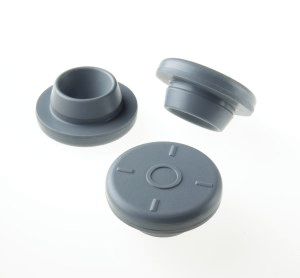Japanese Pharmacopeia Updates- Are you ready
The Japanese Pharmacopeia (JP) has updated chapter 7.03 “Test for Rubber Closures for Aqueous Infusions” and the last date to transition to the new version is September 30, 2015.
![]()
Are you ready?
Rubber components used in the Japanese market need to be compliant with the tests listed in this chapter. Below is a summary of the major changes including changes to test solution preparation and toxicity requirements, and some items to consider as we all move through this transition.
The Change: Prior to the update, test solution preparation was by weight (extraction volume was 10 times the mass of the material). However, extractable substances are impacted by the surface area of the sample being exposed to the extraction solvent. Therefore, different test configurations of the same weight could have different surface areas, creating a potential for differences in test solution concentration. Moving forward, the new revision requires the test solution to be prepared using a consistent sample surface area of 150 cm2.
What does this mean to me? The concentration of the test solution may not be the same for elastomeric closures that were tested prior to the change. While the test is now more consistent for various configurations of the same formulation of samples tested, it may not be consistent with results obtained from previous tests. An evaluation of product compliance to the new test method should be performed.
The Change: Three tests were removed in the updated version and are no longer required to demonstrate compliance of elastomeric closures: Foam, Pyrogen and Hemolysis. The requirement for when to perform the Acute Systemic Toxicity test was modified and is now only required when the sample solution does not meet the requirements of the Cytotoxicity test.

What does this mean to me? The removal of these tests should have no impact on products being used today. It is just important to recognize that these tests are no longer required in studies to evaluate elastomeric closures for JP compliance, except in the case of the Acute Systemic Toxicity test, which still needs to be performed when required.
The Change: A new Cytotoxicity method was added to JP 7.03 and it is a quantitative test that measures cell growth inhibition when exposed to serial dilutions of a sample test solution. The Cytotoxicity test states that other appropriate methods for evaluating cytotoxicity may be used in place of the method detailed in the JP. However, if test results obtained according to the other method are “questionable” the JP Cytotoxicity test should be performed. An example of an alternative method would be one that is commonly used for samples that need to demonstrate compliance in the United States markets and is described in the United States Pharmacopeia (USP) chapter <87>. The USP <87> MEM elution method is a qualitative test that classifies the amount of cell morphology changes (such as changes in cell shape, disintegration, or even potential cell death) by grades when exposed to a sample test solution (described below). Because there are differences in test solution preparation and the methodology used in the two different tests, the results are not directly comparable. When results obtained using USP <87> are Grade 0, the data could be used to justify that the JP cytotoxicity test is not required because in theory there would be no cell reactivity to quantify. However, if any results are greater than 0, this indicates the potential for cell reactivity to the test solution and the most conservative approach would be to quantitate the reactivity via the JP test.
| USP<87> MEM Elution criteria Grade | Reactivity | Condition of All Cultures |
| 0 | None | Discrete intracytoplasmic granules; no cell lysis. |
| 1 | Slight | Less than or equal to 20% of the cells are round, loosely attached, and without intracytoplasmic granules; occasional lysed cells are present. |
| 2 | Mild | Greater than 20% to less than or equal to 50% of the cells are round and devoid of intracytoplasmic granules; no extensive cell lysis and empty areas between cells. |
| 3 | Moderate | Greater than 50% to less than 70% of the cell layers contain rounded cells or are lysed. |
| 4 | Severe | Nearly complete destruction of the cell layers. |
What does this mean to me? A review of all current and planned studies and products should be conducted to determine if any are affected by the addition of the Cytotoxicity test requirement. If so, an assessment should be completed based on the relative risk of results obtained using the new compendia versus the previous version to determine if products require additional testing.
How can West help?
West has evaluated its current JP compliant formulas to ensure continued agreement with the changing test requirements and will update formulation characteristics, as appropriate. There has been no change to West items that were previously compliant based on the new requirements. West Analytical Services laboratory can support testing needs as part of a customer’s evaluation of this change as it is also the responsibility of the end user to confirm that the packaging components used in their products meet the necessary requirements. For any additional questions or for further discussion on this topic, please contact your West Technical Customer Support representative.



